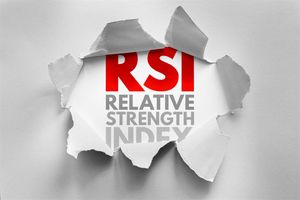
As October 2025 unfolds, the financial markets are once again abuzz with discussions surrounding stock splits, a corporate action that, while fundamentally cosmetic, continues to capture investor attention and influence market sentiment. While a stock split does not alter a company's intrinsic value or an investor's total ownership stake, it significantly impacts stock accessibility, liquidity, and often acts as a powerful signal of management's confidence in future growth. This month sees a mix of companies announcing forward splits aimed at broadening their investor base, alongside a notable reverse split, highlighting the diverse strategic uses of this financial maneuver.
The immediate implication of a stock split for investors is a proportional increase in the number of shares owned and a corresponding decrease in the per-share price, leaving the total investment value unchanged. For companies, the primary objective is often to make their stock more affordable and attractive to retail investors, potentially boosting trading volume and liquidity. This strategic move can also carry a significant psychological impact, making a stock appear more "affordable" and often leading to a short-term surge in interest and price. However, market observers emphasize that while the excitement around splits is palpable, especially in late 2025, investment decisions must remain rooted in a company's underlying financial health and growth prospects rather than solely on the split itself.
Recent Stock Split Activity and Market Reactions
October 2025 has brought several notable stock split announcements and considerations, reflecting varying corporate strategies. Indian heavy engineering company BEML (NSE: BEML) announced a 1:2 stock split, meaning shareholders will receive two shares for every one they currently own, with a record date set for November 3, 2025. This move is typically aimed at increasing the liquidity of its shares and making them more appealing to a wider pool of investors. Similarly, Sumeet Industries Ltd (NSE: SUMEETIN) approved a 1:5 stock split, a more aggressive move designed to significantly reduce its per-share price and enhance accessibility. Geekay Wires (NSE: GEEKAYWIRE) also joined the trend with a 2-for-1 stock split, reinforcing the sentiment that companies with appreciating stock values are utilizing splits to maintain investor engagement.
These forward splits are generally met with positive initial market reactions, as they are often perceived as a sign of management's optimism regarding sustained growth. The timeline leading up to these events typically involves a period of strong stock performance, prompting the board of directors to consider a split to keep the share price within an "optimal" trading range. For instance, AGI INFRA (NSE: AGIINFRA) had already approved a 5:1 stock split in August 2025, signaling a proactive approach to managing its share structure. A key player to watch this month is Computer Age Management Services (CAMS) (NSE: CAMS), whose board is slated to meet on October 10, 2025, to consider a stock split. Such announcements often lead to speculative trading activity in the days leading up to the board meeting, as investors anticipate a positive outcome.
In stark contrast, Clean Energy Technologies (CETY) (OTC: CETY) announced a 1-for-15 reverse stock split, effective October 6, 2025. A reverse stock split consolidates existing shares into fewer, higher-priced shares. This action is typically taken by companies whose stock price has fallen significantly, often below minimum listing requirements for major exchanges. While a necessary measure for survival on an exchange, reverse splits are generally viewed with caution by the market, as they can indicate underlying financial distress or a lack of investor confidence. The immediate market reaction to reverse splits is often negative, reflecting these concerns.
Companies in Focus: Winners and Losers from Stock Splits
The current wave of stock splits presents a mixed bag of potential winners and those facing challenges. Companies undertaking forward stock splits, such as BEML (NSE: BEML), Sumeet Industries Ltd (NSE: SUMEETIN), Geekay Wires (NSE: GEEKAYWIRE), and AGI INFRA (NSE: AGIINFRA), are generally positioning themselves for increased investor interest and liquidity. By lowering their per-share price, these companies aim to attract a broader retail investor base, potentially leading to higher trading volumes and a more dynamic market for their shares. The enhanced accessibility can also make their stocks more appealing for inclusion in certain indices or investment funds that have price-based entry criteria. The anticipation around Computer Age Management Services (CAMS) (NSE: CAMS) potentially announcing a split could also see its stock benefit from speculative buying, assuming the board approves the action. These companies are likely to "win" in terms of market perception and potentially short-term price appreciation driven by renewed investor enthusiasm.
Conversely, companies like Clean Energy Technologies (CETY) (OTC: CETY), which is undergoing a 1-for-15 reverse stock split, are typically in a more precarious position. Reverse splits are often a last resort to avoid delisting from an exchange due to a persistently low share price. While the immediate goal is to meet minimum bid price requirements, a reverse split does not address the underlying operational or financial issues that led to the stock's decline. Investors often interpret reverse splits as a negative signal, leading to further selling pressure and a potential loss of confidence. Therefore, CETY and similar companies undergoing reverse splits might be perceived as "losing" in terms of investor sentiment and could face continued challenges in regaining market trust and achieving sustainable growth.
It is crucial for investors to understand that a stock split, whether forward or reverse, is a corporate action that, in isolation, does not change the fundamental value of the company. The "winning" or "losing" aspect is largely tied to market perception, liquidity improvements, or the urgency of addressing listing compliance issues. The long-term performance of these companies will ultimately depend on their financial results, competitive landscape, and strategic execution, rather than merely the mechanics of their share structure.
Wider Significance: Trends, Ripple Effects, and Historical Context
The ongoing trend of stock splits in late 2025, particularly in October, fits into a broader narrative of companies aiming to enhance market accessibility and liquidity in a dynamic financial landscape. This phenomenon is not new; historically, companies with high-flying stock prices have often opted for splits to keep their shares within an "optimal" trading range, making them more palatable for individual investors. The advent of fractional share trading has somewhat diminished the strict necessity of splits for accessibility, yet the psychological impact and signaling effect remain potent. Many high-growth companies, particularly in the technology sector, have historically utilized splits to maintain broad investor appeal.
The ripple effects of these splits can be significant. Increased liquidity in the shares of companies like BEML (NSE: BEML) or Sumeet Industries Ltd (NSE: SUMEETIN) could lead to greater analyst coverage and institutional interest, potentially driving further demand. For competitors, a successful split by a rival might prompt a re-evaluation of their own share structure, particularly if their stock price has also appreciated significantly. While there are no direct regulatory or policy implications from a standard stock split, the increased retail participation it encourages could draw more scrutiny from financial regulators concerning market fairness and investor protection, especially if speculative bubbles emerge around split-announced stocks.
Historically, companies that execute forward stock splits have often outperformed the broader market in the 12 to 18 months following the announcement. This often stems from the underlying strength that led to the high share price in the first place, coupled with the positive market sentiment and increased investor base post-split. However, it's vital to differentiate these from reverse splits, which often signal distress and have a less favorable historical track record. The current market environment, characterized by ongoing interest in specific sectors like AI (though not directly linked to these specific October splits), suggests that companies demonstrating strong fundamentals and growth potential are more likely to see sustained benefits from a stock split.
What Comes Next: Opportunities and Challenges
Looking ahead, the landscape for stock split companies in the short and long term presents both opportunities and challenges. In the immediate aftermath of a forward stock split, companies like BEML (NSE: BEML) and Sumeet Industries Ltd (NSE: SUMEETIN) may experience a short-term boost in trading volume and potentially a modest price appreciation driven by increased retail investor interest and positive market sentiment. This newfound liquidity can facilitate easier entry and exit for investors, which is generally seen as a positive. For investors, this creates opportunities to enter positions in companies that previously seemed out of reach due to high per-share prices, albeit with the understanding that the underlying value remains the same.
In the long term, the success of these split companies hinges on their fundamental performance. A stock split, by itself, is not a catalyst for sustained growth; it merely adjusts the share structure. Therefore, the strategic pivots or adaptations required will focus on continued operational excellence, innovation, and market expansion. Companies that continue to deliver strong earnings, expand their market share, or introduce groundbreaking products are more likely to see their post-split share price appreciate over time. The challenge lies in maintaining investor interest beyond the initial excitement of the split, especially if the company's growth trajectory falters.
Conversely, for companies like Clean Energy Technologies (CETY) (OTC: CETY) undergoing a reverse split, the path ahead is fraught with challenges. The immediate goal is often survival and meeting listing requirements. The long-term prospects depend entirely on the company's ability to turn around its business, improve profitability, and rebuild investor confidence. Market opportunities for such companies are often limited to highly speculative investors, and the risk of further decline remains significant. Investors should watch for sustained improvements in financials and strategic execution as key indicators of a potential turnaround. Overall, the market will continue to scrutinize the underlying health of companies that split, making fundamental analysis paramount for identifying genuine long-term investment opportunities.
Comprehensive Wrap-up: Navigating the Split Market
October 2025 has underscored the enduring relevance of stock splits as a strategic tool for public companies, albeit with varying implications depending on the type of split. The key takeaway from this period is that while forward stock splits (like those from BEML (NSE: BEML), Sumeet Industries Ltd (NSE: SUMEETIN), and Geekay Wires (NSE: GEEKAYWIRE)) are often perceived positively, enhancing accessibility and signaling management confidence, they are not a substitute for robust financial performance. For investors, the immediate impact is largely cosmetic – more shares at a lower price, but the same total investment value. The real opportunity lies in identifying companies that use splits from a position of strength, indicating sustained growth potential.
Moving forward, the market will likely continue to view forward splits as a positive, particularly from companies in growth sectors or those with consistently high-performing stocks. The speculation around potential splits from high-profile companies like Computer Age Management Services (CAMS) (NSE: CAMS) will keep this topic in the headlines. However, the cautionary tale of reverse splits, as seen with Clean Energy Technologies (CETY) (OTC: CETY), serves as a stark reminder that such actions often point to underlying distress and warrant extreme caution from investors.
In the coming months, investors should watch for continued operational excellence and strong financial results from companies that have recently split their stock. Pay close attention to earnings reports, guidance updates, and any strategic announcements that indicate genuine business growth, rather than being swayed solely by the psychological appeal of a lower share price. The lasting impact of these splits will be determined by whether they truly facilitate broader ownership and liquidity for fundamentally strong companies, or if they merely serve as temporary distractions in the absence of real value creation. Ultimately, a well-researched investment strategy, focused on fundamentals, remains the most reliable path to success in a market influenced by corporate actions like stock splits.
This content is intended for informational purposes only and is not financial advice







